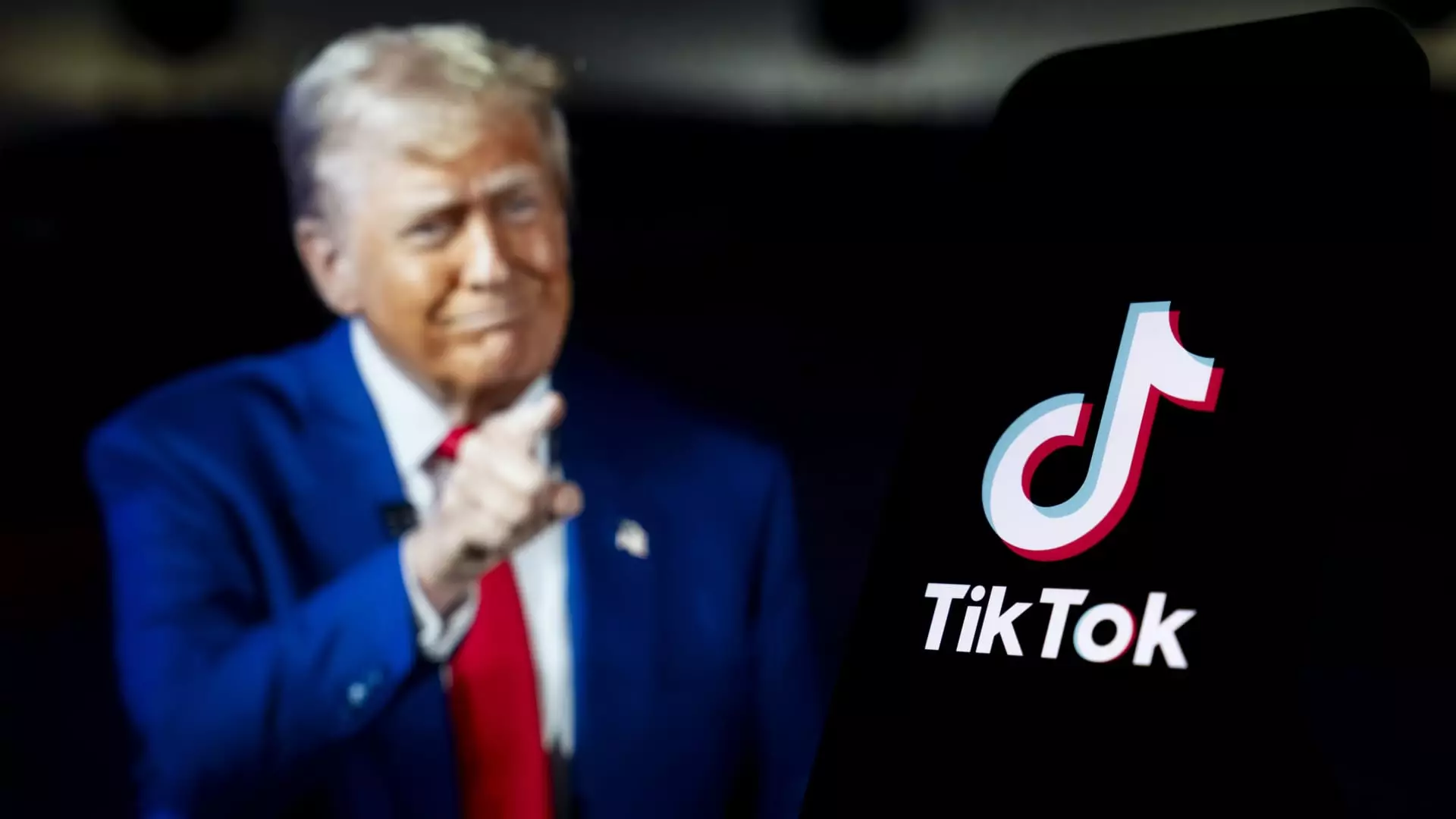TikTok has recently experienced a precarious moment in its operational history, marked by a significant drop in user engagement. According to Cloudflare Radar, usage plummeted by an alarming 85% when the app experienced a temporary shutdown earlier this month. However, there appears to be a resilient rebound, with traffic levels recovering to just about 10% lower than they were pre-shutdown, as confirmed by David Belson from Cloudflare who noted the gradual restoration of DNS traffic to TikTok-related domains. This impressive recovery is an important indicator of the platform’s hold on its user base despite interruptions to its service.
The brief interruption followed a Supreme Court ruling that upheld a controversial law requiring ByteDance, the Chinese parent company of TikTok, to either divest its ownership or face a ban in the United States effective January 19. As a ripple effect of this ruling, tech giants Apple and Google subsequently removed TikTok from their app stores, thrusting the platform into a precarious situation. However, the political landscape shifted dramatically when President Donald Trump issued an executive order postponing the enforcement of these restrictions, underscoring just how entwined TikTok is with political and economic narratives.
The Power Players and Potential Ownership Changes
The interest in TikTok has not solely been confined to legislation; several high-profile individuals, including media mogul Frank McCourt and popular YouTuber Mr. Beast, have entered discussions to potentially purchase a stake in the app. Notably, figures like Elon Musk and Oracle’s Larry Ellison have been mentioned as possible candidates for partial ownership. This intrigue around ownership could pivot the app’s trajectory dramatically, raising questions about the extent to which regulatory pressures will continue to shape its operations moving forward.
Despite the drastic measures taken by tech companies, TikTok has impressively managed to retain much of its user base and creator community in the U.S. even after being offline for an estimated 14 hours. This indicates a robust loyalty among its users. However, it’s essential to recognize that while TikTok’s current momentum is promising, the app’s long-term viability in the U.S. remains shrouded in uncertainty due to the preceding events.
With the threat of a TikTok ban hovering over the app, rival platforms have seized the moment, experiencing an uptick in traffic as users begin exploring alternatives. Cloudflare’s data laid bare this trend, showing a spike in visits to rival applications, particularly RedNote (known as Xiaohongshu in China), around the announcement of TikTok’s suspension. While TikTok continues its bounce-back, user engagement with alternative platforms has scaled dramatically.
This switch in attention serves as more than just an indicator of shifting user preferences; it signifies a broader landscape of competition that will only further evolve. As TikTok scrambles to maintain relevance, competitors have begun devising marketing strategies that exploit TikTok’s vulnerabilities, such as leveraging partnerships with creators to promote their platforms in a way that TikTok has yet to counter.
Faced with the uncertainty surrounding TikTok’s future, many content creators are proactively diversifying their online presence. Creators like Dylan Lemay, who boasts over 10 million followers on TikTok, have recognized the need to establish footholds on other platforms, such as YouTube, to safeguard their careers against potential disruptions. Lemay’s approach reflects a wise strategy: By transitioning his creativity to multiple platforms, he can mitigate risks associated with a potential TikTok ban.
Despite the positive transformation some creators are undergoing, not everyone has found similar success on alternative platforms. Noah Glenn Carter, another prominent creator approaching the 10 million follower mark, notes significant discrepancies in his audience sizes across different social media platforms. As partnerships renegotiate in light of TikTok’s uncertain standing, several brands are adapting their marketing agreements to include other platforms, often leaving creators in a precarious financial position.
The Future of Short-Form Content
Amidst the fluctuating dynamics, some creators hold firmly to their belief in TikTok’s resilience, like Michael DiCostanzo, who still sees value in remaining with TikTok despite exploring other avenues. However, he, along with many others, is acutely aware that competing platforms have yet to replicate the unique sense of community fostered on TikTok.
The creation of engaging content thrives on establishing and nurturing connections with audiences, something TikTok has excelled at. As competition intensifies, the challenge lies not only within the creators shifting platforms but also in whether these platforms can cultivate the same level of engagement and community that TikTok has established for its vast user base.
While TikTok faces significant obstacles ahead, the determination of its creators to adapt and diversify paints an optimistic picture of resilience in the realm of social media, one that highlights the ongoing evolution of online engagement beyond just a single application.


Leave a Reply